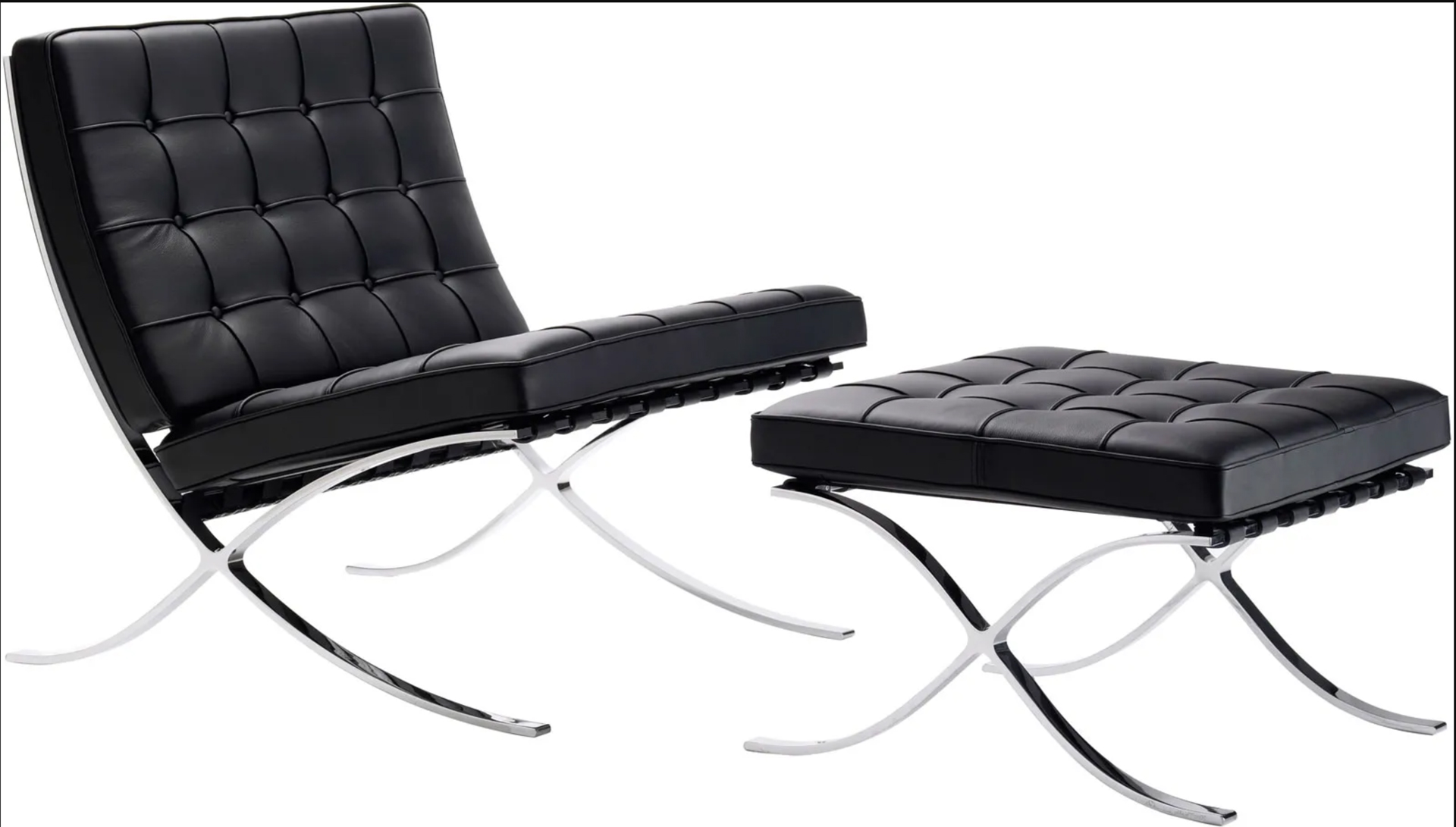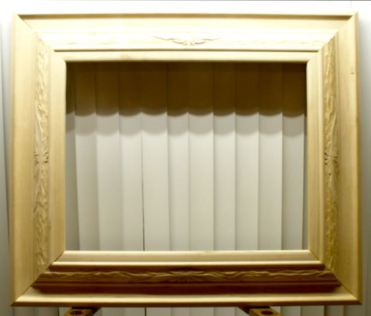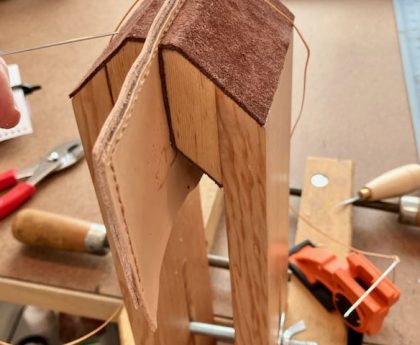The Barcelona Chair, a masterpiece designed by architect Ludwig Mies van der Rohe, is a symbol of modern design and architectural innovation. Created in 1929 as part of the German Pavilion for the International Exposition in Barcelona, Spain, the chair is celebrated for its timeless elegance, craftsmanship, and revolutionary approach to form and function.
Mies van der Rohe’s design philosophy
Mies van der Rohe’s design philosophy for the Barcelona Chair was deeply rooted in the principles of the modernist movement. Influenced by the Bauhaus School, he aimed to create furniture that seamlessly blended aesthetics, comfort, and functionality. The chair’s inspiration can also be traced back to ancient Roman folding chairs, which Mies admired for their simplicity and efficiency.
Construction and Materials
One of the distinctive features of the Barcelona Chair is its minimalist and clean lines. Mies van der Rohe employed a meticulous construction process, using a combination of traditional craftsmanship and modern materials. The frame is made of chromed steel, welded, and polished to achieve a seamless appearance. The chair’s seat and backrest are made from individual leather square cushions, hand-stitched together with great precision. The choice of materials and craftsmanship not only enhances the chair’s visual appeal but also ensures durability and comfort.
Functionality and Comfort
Mies van der Rohe’s commitment to functionality is evident in the design of the Barcelona Chair. Its gently inclined seat and the strategic placement of cushions provide exceptional comfort without compromising on style. The chair’s low-slung profile and open design contribute to its versatility, making it suitable for various spaces, from living rooms to office lounges.
Recognition and Awards
The Barcelona Chair’s impact on modern design extends beyond its initial creation. Its success paved the way for Mies van der Rohe to continue exploring innovative furniture design, influencing subsequent generations of architects and designers. The chair has become synonymous with sophistication and refined taste, finding a place in upscale homes, offices, and cultural institutions worldwide.
The Barcelona Chair has received numerous accolades over the years, solidifying its status as a design classic. In 1977, it was awarded the “Design of the Century” award by Time magazine, further cementing its place as an iconic furniture design.
Cultural Significance
Beyond its functional and aesthetic qualities, the Barcelona Chair has become a cultural symbol associated with luxury and prestige. Its presence in films, television shows, and the offices of influential figures has contributed to its enduring popularity and cultural relevance.
Mies van der Rohe’s Background and Journey into Architecture & Furniture Design
Ludwig Mies van der Rohe, born on March 27, 1886, in Aachen, Germany, was a pioneering architect and designer who played a crucial role in the development of modernist architecture. His journey into architecture and later into furniture design was marked by a combination of education, mentorship, and evolving design philosophies.
Entry into Architecture:
1. Early Education:
Mies van der Rohe’s interest in architecture was sparked at a young age. After completing his formal education in Aachen, he worked briefly in his father’s stone-carving business. His early exposure to craftsmanship and materials would later influence his design ethos.
2. Apprenticeship with Bruno Paul:
In 1905, Mies moved to Berlin and began working for the architect and furniture designer Bruno Paul. This apprenticeship provided Mies with practical experience and allowed him to explore various design elements, laying the foundation for his future career.
3. Engagement with the Arts and Crafts Movement:
Mies became associated with the German Werkbund, an organization that aimed to integrate traditional crafts with modern industry. Through this involvement, he encountered the Arts and Crafts Movement’s ideas, which emphasized the importance of craftsmanship and the marriage of art with functional design.
4. Bauhaus School:
Mies van der Rohe’s most influential period came when he joined the Bauhaus School in 1930, initially as the director of the architecture department. The Bauhaus, a renowned school of design, played a pivotal role in shaping modernist principles. Mies’ time at the Bauhaus further refined his design philosophy, emphasizing functionality, simplicity, and the use of modern materials.
Transition to Furniture Design:
1. Introduction to Tubular Steel:
During the 1920s, Mies experimented with tubular steel as a material for furniture design. Inspired by the potential of this material, he created a series of tubular steel chairs that marked the beginning of his foray into furniture design.
2. Tugendhat and Barcelona Chairs:
Two of Mies van der Rohe’s most iconic furniture designs emerged during his later career. The Tugendhat Chair (1929), designed for the Tugendhat House in Czechoslovakia, and the Barcelona Chair (1929), created for the German Pavilion in Barcelona, showcase his mastery of materials, form, and proportion.
3. Collaboration with Lilly Reich:
Mies collaborated with the designer Lilly Reich on several furniture pieces. Their partnership was particularly significant in the development of iconic designs, including the Barcelona Chair and the Brno Chair, both of which continue to be celebrated examples of modernist furniture.
Ludwig Mies van der Rohe’s contributions to both architecture and furniture design have left an enduring legacy. His commitment to simplicity, functionality, and the innovative use of materials has influenced generations of architects and designers. The Barcelona Chair, in particular, remains an iconic piece of furniture that exemplifies Mies van der Rohe’s vision for modern design.





